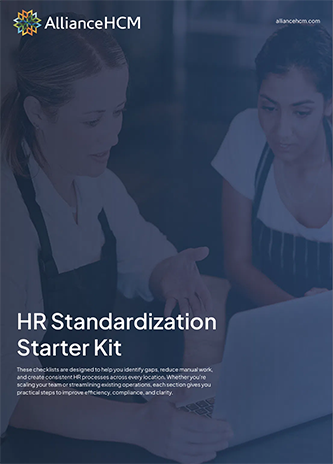Creating an employee handbook may feel like a daunting task, but it protects businesses and employees. A comprehensive guidebook not only establishes the company’s culture but also provides clarity on employees’ rights and responsibilities. Let’s dive into a step-by-step approach that will help you create an employee handbook with ease and confidence.
An employee handbook conveys your company’s policies, culture, and values. Creating an employee handbook for your business can legally protect your organization and employees. It serves as a valuable resource that outlines rights, responsibilities, policies, and procedures for everyone involved.
There are many benefits to creating an employee handbook:
- It sets clear expectations for employees.
- It protects your company against potential legal disputes.
- It promotes consistency with policies and procedures across the organization.
- It eases the onboarding process for new hires by explaining company culture and values.
- It becomes a reference for company policy for employees.
- It ensures compliance with federal, state, and local employment laws and regulations.
- It provides a framework for resolving workplace issues and conflicts.
Who is responsible for creating an employee handbook?
The primary authority for creating a handbook would be the human resources (HR) department. They may need to consult the organization’s legal team, management, and communications specialists. Some companies also seek feedback from employees to ensure the terms are clear. However, small businesses may need to outsource some expertise (e.g., a legal consultant).

What are the key items in an employee handbook?
These sections should be included when you create your employee handbook template:
- Welcome statement: This is a warm introduction that reflects your company culture.
- Overview of company history, mission statement and culture: Use this space to share your company’s story and the culture you aim to foster.
- Equal employment opportunity (EEO) statement: This is a legally required commitment to a diverse and inclusive workplace.
- Employment policies: Detail the nature of employment, remote work policies, job classifications, and probationary periods. Include work hours, attendance, and leave policies (e.g., parental leave, sick leave, paid time off, etc.)
- Compensation and employee benefits: Clearly outline the salary structures, bonus schemes, and benefits. Provide employees with a comprehensive understanding of their compensation and rewards so that they know exactly what to expect.
- Code of conduct: This guides expected employee behavior, anti-harassment policies, dress code, and ethics.
- Communication policy: These are the internal communication standards and company equipment use.
- Safety and health policies: This should refer to and outline OSHA regulations and the relevant safety laws.
- Disciplinary and complaint procedures: This section should detail processes for handling workplace disputes.
- Privacy policies: This explains how company technology uses and protects data.
- Behavioral Guidance: Information regrading employees social media use and other reputation matters.
When you create an employee handbook, you should communicate any state-specific or local laws that are relevant to your employees, especially if you operate in multiple jurisdictions. Everyone should be aware of the specific legal requirements in each location like minimum wage.
How to create an employee handbook
These are some simple steps to follow when creating an employee handbook as a small business:
- Define the purpose of the employee handbook. Be clear about your objectives for the handbook. Ensure that it is in line with your company’s mission and values.
- Gather essential policy information. Make sure to review your existing policies and procedures thoroughly. Identify any areas that may require improvement or updates. Additionally, consider the implementation of new policies and procedures to address any emerging needs.
- Consult with a lawyer to understand requirements. To ensure full compliance with federal, state, and local laws, it is imperative to consult with a legal professional. This step is necessary to navigate the complex legal landscape and mitigate any potential risks or penalties.
- Draft the employee handbook. Please ensure your writing is clear and concise, avoiding complex jargon that may confuse the reader. While it is important to be thorough, try to keep your language simple and easy for all audiences to understand. There should be no ambiguity about what you are trying to convey.
- Review the employee handbook and get feedback. Ensure that you have your handbook reviewed by your legal team and relevant team members.
- Finalize the content. Once you have finalized the handbook, ensure that it is accessible to all employees. Make it available in a digital format so everyone can easily access the employee handbook.
- Make sure to regularly update the content of the handbook. Keeping it up-to-date with the most recent laws and company policies is critical.
Create a better employee experience.
Take time to give your employees a better payroll experience. AllianceHCM can help you with our human resources solutions to maximize your productivity.
Contact the AllianceHCM team to discover efficiencies for your HR needs.





